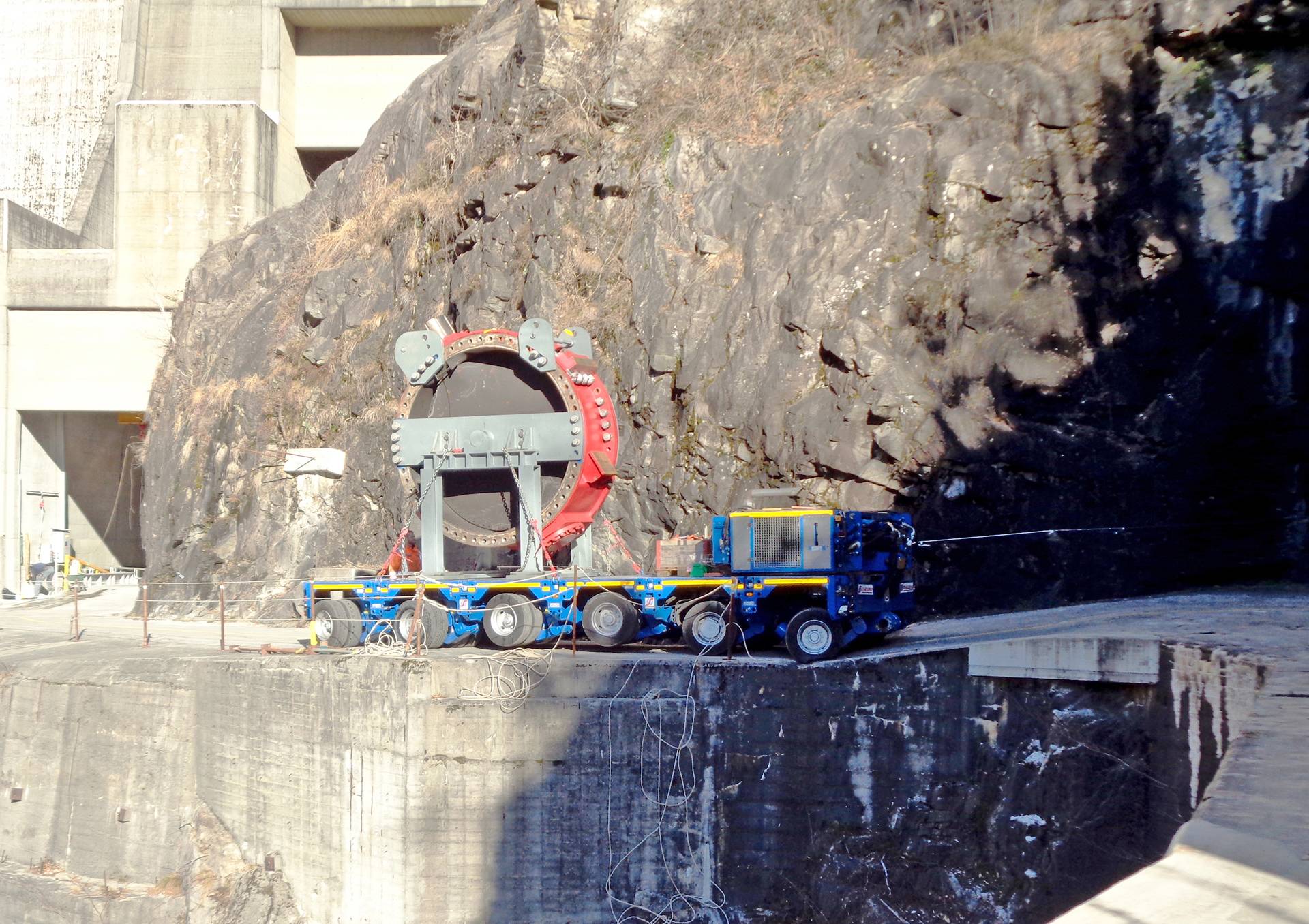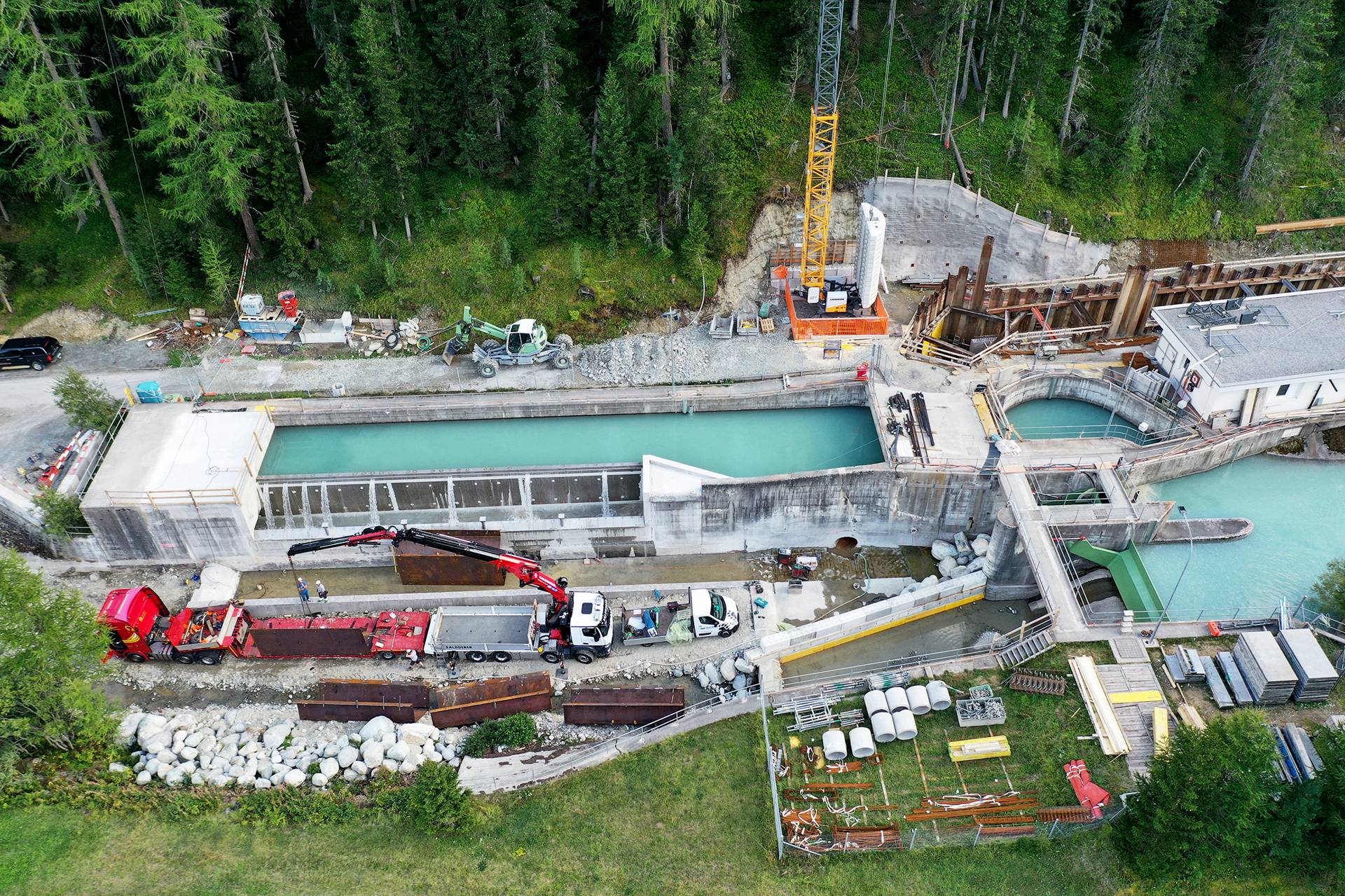How the Austrian generator specialist drives innovations7 min read
Lesedauer: 5 MinutenNo other generators are found in as many installations in Central Europe’s small-scale hydroelectric power plants as those made by the long-established Upper Austrian manufacturer, Hitzinger.
And with good reason: Well-known qualities such as high efficiency and durability aside, this company’s engineers regularly excel with improvements and innovations. Last autumn, the industry specialists from this Linz-based manufacturer used the “Renexpo Interhydro” congress and trade show that is gaining in visitor frequency to showcase their latest new designs. Among those are an optimised terminal box, temperature controlled motor-driven vent flaps and new multi-pole machines with forced ventilation.
As much as many operators are keen to effectively get the excess heat from the generators out of the power houses in summer, as much is the warm air from within the generator welcome on chilly winter days. It is essential, after all, to prevent freezing over at certain locations and of course to keep the staff from freezing. A very simple method to provide a continuous heat supply is to open the emergency flaps in the housing of the air to water heat exchanger. This is why many operators keep their generators running with open flaps all winter. In view of a minimised dust influx into the machine, this is less than ideal, though. After receiving a request to solve this issue, the Hitzinger engineers decided to deliver a simple solution. It features an electrically controlled arm that fully automatically opens or closes the generator’s emergency flaps depending on the temperature. With this solution, the Hitzinger engineers have again delivered proof that they are willing and able to react swiftly to market ideas and requirements with practical as well as cost-efficient solutions.
User-friendliness is imperative
A similar case is that of another recently implemented innovation: Hitzinger staff had listened closely when the occasional operator as well as turbine manufacturers’ electrical engineers had expressed their desire for better accessibility of the terminals and connectors of vertical-axle generators. This demand was recently met with the concept of a new terminal box design. It is characterised above all by improved usability, high visibility of all components and better accessibility. “This new terminal box is not standard equipment yet but can be supplied upon request. It was good to see customers’ favourable reactions to the presentation of this new design at the Renexpo Interhydro show”, says Dr. Daniel Huber, Business Unit Manager Generators at Hitzinger.
Alternative for PMG required
It is not only minor design innovations such as terminal boxes or motor-driven flaps that Hitzinger engineers have been working on. They similarly tackle much more profound adaptations of the portfolio to changing market requirements. As retrofitting older low-pressure installations occurs more and more frequently, the hydroelectricity market increasingly demands machines with low rpm rates. While in the past few years mainly permanent magnet generators (PMGs) were called for by innovative operators due to their high efficiency by design, recently demand for slow-running synchronous generators has been on the rise. Especially machines with power ratings that only slightly lag behind these of comparable PMGs at attractive costs are currently meeting increased demand. “This is mainly prompted by the fact that a rising number of grid operators require stringent feed-in criteria. This means that a generator now needs not only to be able to provide but also to receive reactive power”, says Daniel Huber. “As a conventional PMG cannot fulfil these requirements without complex compensation equipment, attention is again more focused on modern, slow-running synchronous generators.” Currently, Daniel Huber has a high number of requests for turbines with rpm ratings below 200 on his desk. Designs to solve this kind of requirement usually come with low speed multi-pole machines (instead of high speed machines with gear boxes). These, however, require more space and inflict higher costs. This is why Hitzinger engineers have come up with a simple yet very smart idea: They designed comparatively compact high-pole machines with a low rpm rating that owe their small design to a minor technical innovation: forced ventilation. This is taken care of by several small fans in the generator’s air supply that can be activated individually, depending on the temperature. As high temperatures cause a massive drop in efficiency, this can be used to maintain high power levels. Compared to a machine without forced ventilation, this new version achieves a 20 to 30 percent increase in power.
Production simplification
For a number of years, Hitzinger has been working on another adaptation to a growing market demand for more powerful generators. While only a few years ago, about 2 MVA marked the end of the line, two or three years ago a new milestone was set to celebrate 4 MVA. Meanwhile, the industry specialists based in Linz are offering generators rated at a nominal power of 6 MVA. They have finally made the transition from small to mid-sized hydroelectricity. This wider variety of power classes, however, comes with greater challenges for the production workflows. “For a long time, frame size 110 was our maximum. To extend our product range all the way to 6 MVA at 1,000 rpm, we converted to frame size 136. This forced us to employ different production standards such as using other sheet metal dimensions, etc. or other tools. Our aim was to offer cost-effective generators at the higher power level as well, for instance with slower running machines that do not need to be built to the 136-type manufacturing standards. For this reason, we have added an intermediate frame size 124 to facilitate simplification. We can manufacture this frame size employing the same methods we also use for size 110 models”, Daniel Huber explains how the Upper Austrian engineers managed to fulfil individual customer demands and requirements in this design aspect as well.
Focus on roller bearings
Another focal point for the Hitzinger R&D department lies on the shaft bearings. In rotary machines, they quite understandably receive particularly high levels of attention. Hitzinger shows a strong tendency to move from sleeve bearings to modern roller bearings that facilitate substantial gains in efficiency. Rolling friction has a much lower resistance than sliding friction, after all. What mainly contributes to the competitive edge of roller bearings is the fact that they do not require an external lubrication unit and the associated installations. This can make a difference amounting to some 10,000 to 20,000 Euros. “Using new materials, today’s roller bearings are absolutely apt to handle heavy loads and they have become very easy to replace. Most turbine manufacturers can nowadays do that for their customers“, the Hitzinger engineer adds. In this context, he also points out an interesting feature of Hitzinger generators. Thanks to the time-tested Hitzinger design, unlike other machines they cannot suffer voltage-inflicted damages. These are common in most conventional generators and occur when minimal asymmetries induce a shaft voltage causing bearing currents. These voltage inductions consequently result in severe damages of the affected bearings. In conventional generators, this is often taken care of by using insulated bearings. In a “Genuine Hitzinger“, no such measures are required.
What plays a main role in this context, though, is quite naturally the correct dimensioning of the roller bearings used. It requires much expertise as well as experience. After all, the deciding question is whether to take maximum or average forces into account. This is another of the areas at which operators should consult with generator manufacturers.
A premiere at the Interhydro Show
An excellent opportunity for talks with the Hitzinger generator specialists was the Renexpo Interhydro conference and trade show in Salzburg last November that attracted high numbers of visitors. For the very first time, Hitzinger had been present at the show with a booth. Those interested in hydroelectricity were able to get insights to the ongoing improvements and latest innovations of this first in class. They also had opportunity to learn straight from the source in what direction requirements to modern generators will change. This Linz-based manufacturer is rich in tradition and has been producing electrical machines since 1946, which provides it with lots of experience. The Hitzinger engineers are dedicated motor makers through and through. They simply love finding the optimal response to truly individual questions.
Share:


